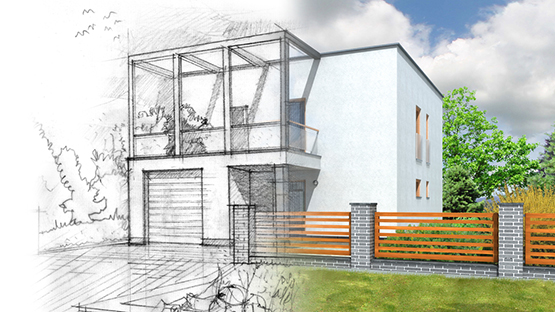The Important Function of a Designer in Shaping Lasting Urban Environments for Future Generations
The role of a designer in crafting lasting metropolitan atmospheres is progressively essential in replying to the obstacles of climate adjustment and urbanization. By seamlessly integrating eco-friendly concepts into their designs, architects not just boost the aesthetic and functional quality of city areas yet additionally address pushing problems such as power effectiveness and social equity. Their know-how in cutting-edge products and area engagement shapes advancements that reverberate with regional worths and desires. As we explore the intricacies of this field additionally, it comes to be apparent that the future of metropolitan living may hinge on the very methods designers employ today.
Comprehending Sustainable Urban Design
Sustainable metropolitan layout integrates environmental principles with city planning to create settings that are not just comfortable yet likewise durable. This approach emphasizes the relevance of integrating natural systems right into the metropolitan textile, ensuring that advancement fulfills the demands of the existing without endangering the capacity of future generations to satisfy their very own requirements. Trick elements of sustainable urban design include effective land use, the promo of biodiversity, and the assimilation of green spaces, every one of which add to enhanced high quality of life for locals.
Furthermore, sustainable metropolitan style focuses on the reduction of the city heat island impact, boosted air quality, and effective stormwater management. It motivates making use of renewable energies and energy-efficient structure techniques, which considerably lower carbon impacts. In addition, sustainable metropolitan design fosters social equity by producing accessible public spaces and advertising mixed-use advancements that accommodate varied populations.
Via thoughtful planning and ingenious layout methods, sustainable metropolitan atmospheres can enhance community strength versus climate modification while fostering financial advancement. This holistic strategy not only addresses instant city obstacles yet additionally lays the foundation for much healthier, extra lasting cities for generations to come.
Key Duties of Architects
Engineers play a pivotal duty in forming sustainable city settings by translating style principles right into substantial structures and areas. Their responsibilities include a wide variety of activities that add to the total success of city design jobs.
Primarily, designers conduct extensive website analyses to comprehend the environmental, social, and social context of their jobs. This fundamental understanding educates their layout choices, making sure that buildings harmonize with their environments. They also involve in collaborative procedures with stakeholders, including city coordinators, engineers, and the neighborhood, cultivating an inclusive method to city growth.
In addition, designers are charged with producing styles that optimize energy performance, source conservation, and functionality. They need to follow regional zoning laws, building codes, and sustainability certifications, making sure conformity while pressing the boundaries of development.

Cutting-edge Materials and Techniques
In the quest of eco accountable style, cutting-edge products and techniques have actually emerged as critical elements in the development of sustainable urban settings. great site Engineers are increasingly making use of products that decrease ecological impact while improving power efficiency. Recycled products, such as reclaimed wood and repurposed steels, not just lower waste however also add special aesthetic qualities to frameworks.
Additionally, developments in technology have caused the growth of high-performance materials, such as insulated concrete forms (ICFs) and photovoltaic glass, which contribute to power preservation and harness eco-friendly energy. Methods such as easy solar design and green roofing systems even more exemplify how design can balance with natural systems, minimizing reliance on artificial heating & cooling.
In addition, the assimilation of clever products, which adapt to ecological modifications, provides encouraging methods for enhancing structure performance - cda architects. These products can react to temperature level changes or wetness degrees, maximizing comfort and sustainability
Ultimately, the calculated option and application of ingenious materials and strategies empower engineers to produce urban rooms that are not just practical and cosmetically pleasing however also resistant and environmentally responsible, making sure a sustainable future for generations ahead.
Area Engagement and Partnership
The success of innovative materials and strategies in lasting urban style is substantially enhanced by energetic neighborhood engagement and collaboration. Engineers must acknowledge that the developed atmosphere exceptionally influences the lives of neighborhood citizens, making it crucial to involve them in the style procedure. Involving the area fosters a feeling of ownership and accountability, ensuring that advancements not only fulfill visual and useful needs yet also mirror the values and goals of those that populate them.

Successful neighborhood engagement also helps in prioritizing social equity within urban growth. By thinking about the voices of marginalized populations, engineers can develop spaces that are inclusive and fair. This way, community interaction and cooperation become important to attaining truly lasting city settings that serve the requirements of present and future generations.
Future Trends in Lasting Design

Additionally, innovations in innovation are shaping future trends in lasting architecture. The integration of smart materials and building systems enables real-time energy monitoring, enhancing effectiveness and minimizing carbon footprints. Developments such as eco-friendly roofing systems, living wall surfaces, and energy-generating facades are coming to be basic discover this practices, better advertising environmental equilibrium within city atmospheres.
In addition, a shift in the direction of biophilic layout is acquiring grip, emphasizing the link in between nature and human well-being. By incorporating natural environments, engineers develop rooms that cultivate psychological health and wellness while promoting biodiversity.
Verdict
Finally, architects are crucial in progressing lasting urban environments with their know-how in layout, innovative materials, and area interaction. By prioritizing energy effectiveness and source preservation, these professionals contribute to the production of resistant urban areas that satisfy the needs of existing and future generations - cda architects. The integration of eco-friendly concepts not just boosts livability yet also cultivates social equity, ensuring growths resonate with the worths and aspirations of the areas they serve